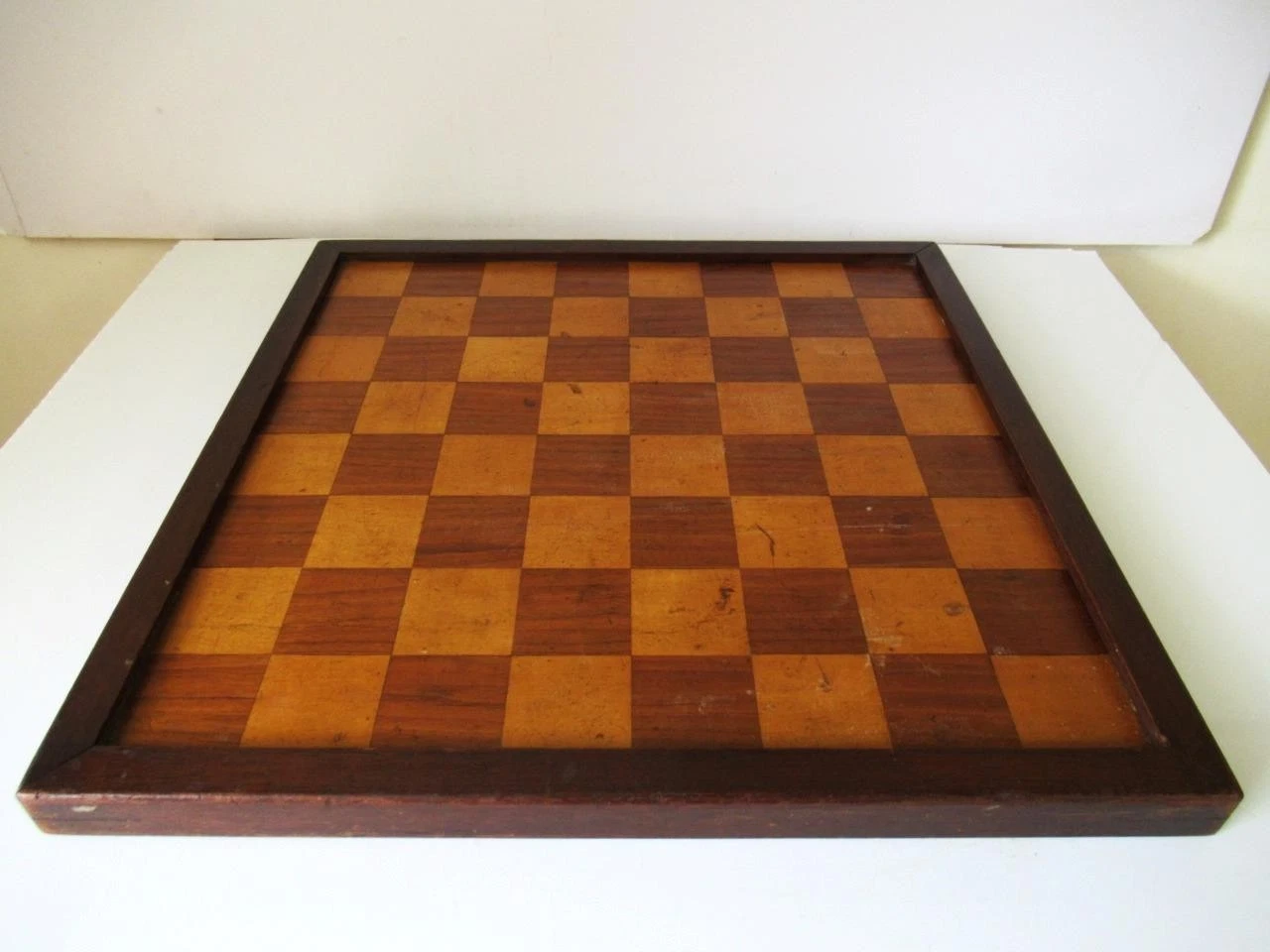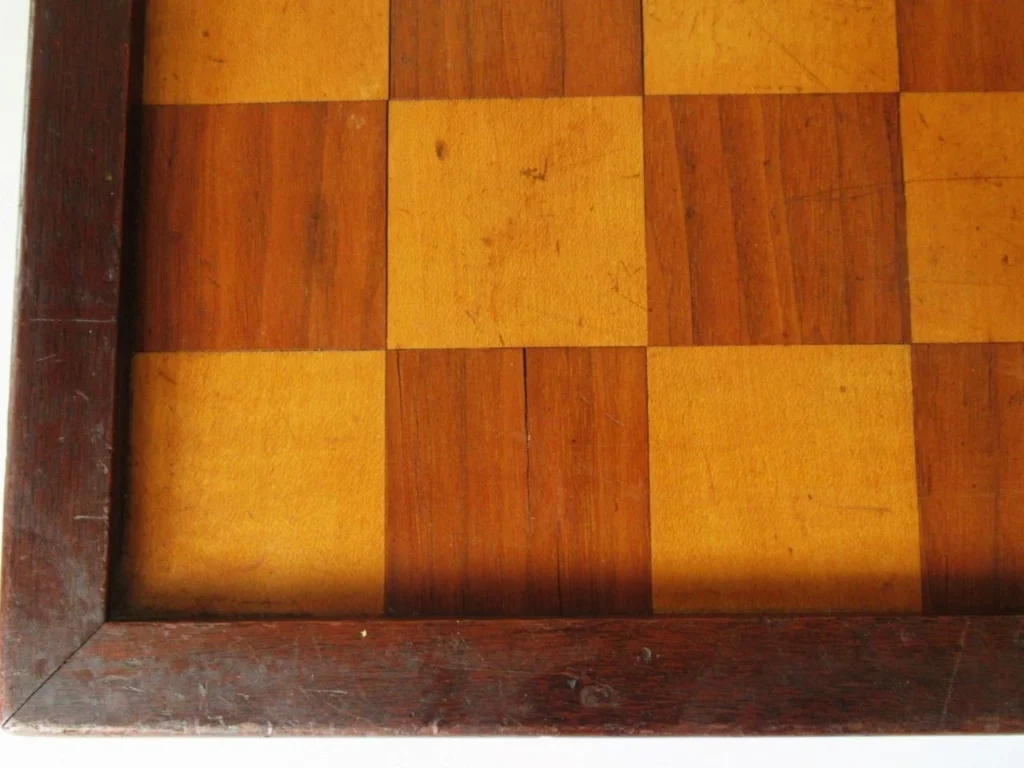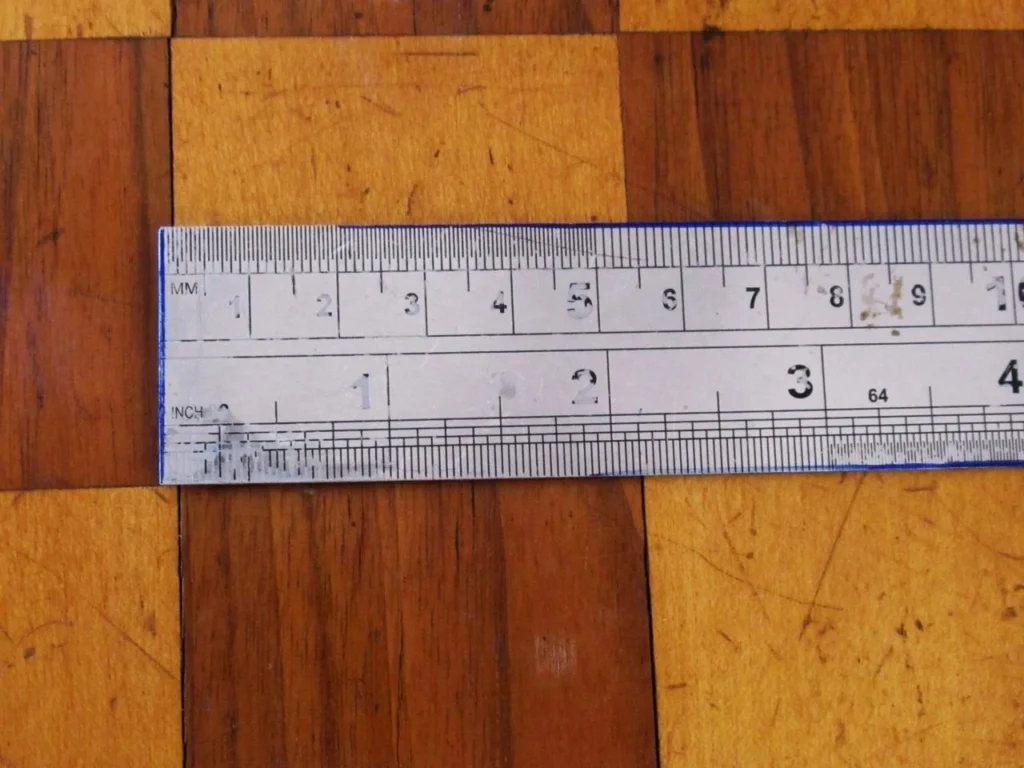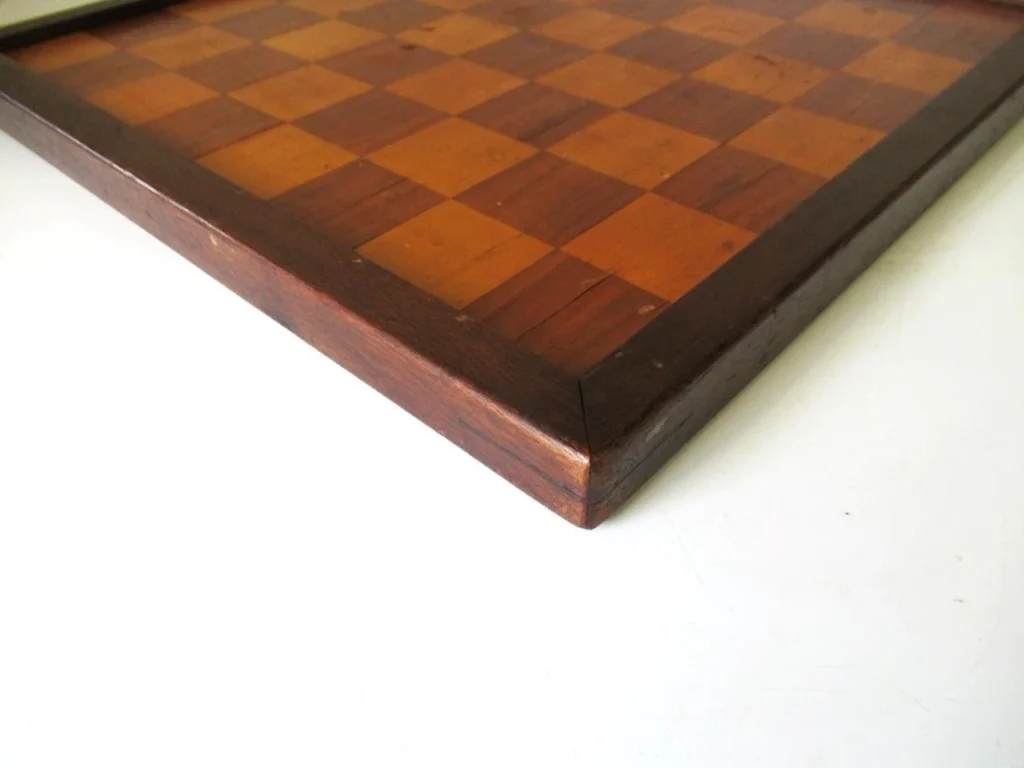The 1880-1900s English Framed Chess Board (2.125″in. Squares) by “Unknown?”.


What they did…
This finely crafted antique chessboard features a very thick, dovetailed, mitred frame constructed from solid, polished mahogany, forming prominently raised edges well above the playing surface—a design that subtly elevates the board’s presence during play. The squares are walnut and birch, offering a beautiful contrast and showcasing a warm toffee-toned patina consistent with age and regular use.
The board, while showing signs of play, has clearly been well cared for over the years. Though not flawless, its condition is very good for its age, making it an ideal candidate for both active play and attractive display. The board has kept much of the original French polish finish intact, adding to its charm as a genuine, honest antique chessboard.
There are no factory or maker’s marks impressed on the board, but its construction and materials speak to its high quality. With its large playing surface, it is particularly well-suited for tournament-sized or club-style Staunton chess sets. This is a solid, durable board, built to endure and perform—both functionally and aesthetically—for generations of chess enthusiasts.




My opinion of the board…
There’s something undeniably special about playing chess on a board that carries the weight of history. From the first moment I placed my Staunton pieces on this antique mahogany board, it was clear—this isn’t just a playing surface, it’s a statement of craftsmanship, character, and tradition.
The thick, dovetailed, mitred mahogany frame immediately commands attention. The raised edges don’t just frame the game—they elevate it, creating a sense of formality and focus that’s rarely found in modern boards. During play, those raised sides give the board a grounded, architectural feel, like a stage where strategy unfolds. The walnut and birch are rich in contrast and tone, making it easy to distinguish squares even under low, warm lighting—a perfect setting for thoughtful evening games.
What really adds to the experience is the board’s toffee-colored patina, a result of decades of careful use. It’s the kind of aging that can’t be manufactured, only earned over time. There’s a softness to the finish, a quiet warmth that invites touch. You feel the past in every move—every knight leap, every queen’s glide. It’s a living board, not just a tool.
Despite its age, the board has held up remarkably well. It’s not flawless, but that’s part of its charm. The wear is honest and well-earned, a testament to the many games it’s hosted. The board dressed in its original French polish, provides a sturdy foundation—no creaks, no warping, just reliable stability. Whether set on a table for a casual game or positioned in a study or library for display, it exudes character.
And while there may be no factory mark or branding, this board doesn’t need a name stamped into it to prove its worth. Its quality is self-evident. The generous dimensions make it ideal for club-size or tournament Staunton pieces, giving each piece the space it deserves without feeling crowded. Playing on it feels ceremonial, yet never cumbersome.
This board isn’t just part of a collection—it’s part of the experience. It adds depth to every game, presence to every room, and a sense of legacy that turns ordinary play into something memorable. Whether you’re a collector, a club player, or simply someone who appreciates fine woodworking, this board is a rare blend of beauty and functionality. It’s not just for playing—it’s for appreciating.




